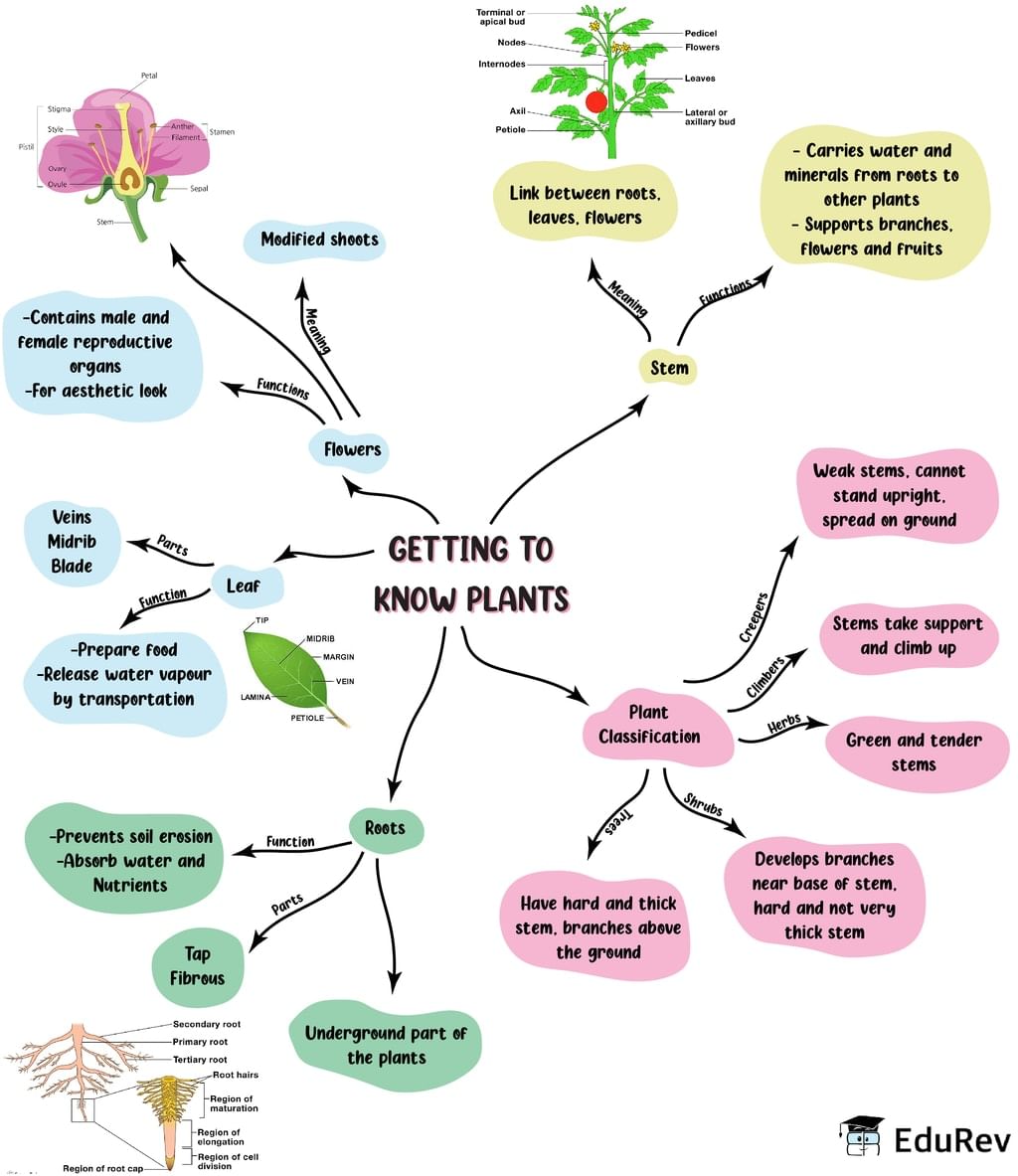Class 6 Exam > Class 6 Notes > Subject-Wise Mind Maps for Class 6 > Mind Map: Getting to know Plants
Mind Map: Getting to know Plants | Subject-Wise Mind Maps for Class 6 PDF Download

The document Mind Map: Getting to know Plants | Subject-Wise Mind Maps for Class 6 is a part of the Class 6 Course Subject-Wise Mind Maps for Class 6.
All you need of Class 6 at this link: Class 6
FAQs on Mind Map: Getting to know Plants - Subject-Wise Mind Maps for Class 6
| 1. What are the different parts of a plant? |  |
Ans. Plants have several parts, including roots, stems, leaves, flowers, and fruits. The roots anchor the plant in the ground and absorb water and nutrients. Stems support the plant and transport water, nutrients, and sugars. Leaves carry out photosynthesis, producing food for the plant. Flowers are the reproductive structures of the plant, attracting pollinators. Fruits contain seeds and are formed from fertilized flowers.
| 2. How do plants obtain water and nutrients? |  |
Ans. Plants absorb water and nutrients from the soil through their roots. The roots have tiny root hairs that increase their surface area for better absorption. Water is taken up through osmosis, while minerals and nutrients are absorbed through active transport. These substances are then transported through the plant's vascular system, which consists of xylem and phloem, to the different parts of the plant.
| 3. What is photosynthesis and why is it important for plants? |  |
Ans. Photosynthesis is the process by which plants convert sunlight, carbon dioxide, and water into glucose (sugar) and oxygen. This process occurs in the chloroplasts of plant cells, specifically in the chlorophyll pigments. Photosynthesis is essential for plants as it allows them to produce their own food and energy. The glucose produced during photosynthesis is used for growth, reproduction, and storage in the form of starch.
| 4. How do plants reproduce? |  |
Ans. Plants can reproduce sexually and asexually. Sexual reproduction involves the production of flowers, pollination, and the fusion of male and female gametes. This results in the formation of seeds. Asexual reproduction occurs through methods such as vegetative propagation, where new plants are formed from vegetative parts like stems, leaves, or roots. Some plants can also reproduce through spores or by producing bulbs, tubers, or runners.
| 5. What are the roles of flowers in plants? |  |
Ans. Flowers play a vital role in plant reproduction. They are the reproductive structures that contain male and female reproductive organs. The male parts of a flower include the stamen, which consists of the filament and anther that produce pollen grains. The female part is the pistil, which consists of the stigma, style, and ovary that contain the ovules. Flowers attract pollinators like bees, butterflies, or birds, which transfer pollen from one flower to another, leading to fertilization and the formation of seeds.
Related Searches

















